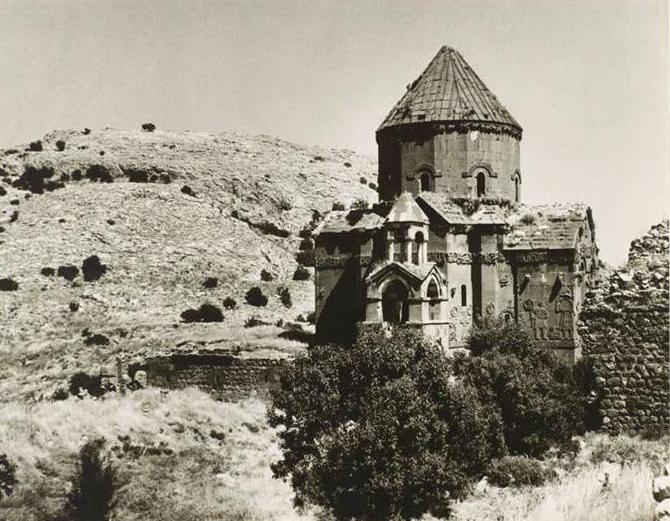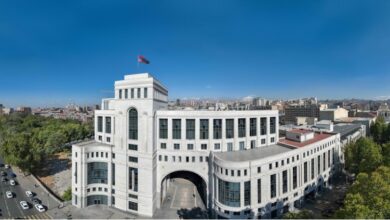
Twenty black-and-white photographs of lesser-known sites in Turkey — the work of Turkish Armenian photographer Ara Güler, – are on display in the intimate exhibit “In Focus: Ara Güler’s Anatolia,” at the Arthur M. Sackler Gallery, The Washington Post reports.
A legend, Güler, 85, is called the “Eye of Istanbul” for his 1950s and ’60s photos of street scenes that are among the most iconic representations of the city.
The Istanbul native, whose photographic archive includes some 800,000 images, got his start in the 1950s as a photojournalist for Hayat (the Turkish “Life” magazine) and went on to a distinguished career that included working at Magnum Photos with luminaries including Henri Cartier-Bresson and publishing his work around the world.
The works in “In Focus” — never previously shown — come from a set of 53 photographs donated to the museum in 1989 by Raymond Hare, U.S. ambassador to Turkey from 1961 to 1965. Hare had a keen interest in Middle Eastern architecture, and the photos were a gift from colleagues when he left Turkey.
Shot at locations across Anatolia, the photographs mainly portray medieval Seljuk and Armenian monuments, along with a few other sites including the stunning IshakPasaPalace in Dogubayazit, built by the Ottomans in the 18th century.
The photos of Armenian sites, including the 10th-century Church of the Holy Cross on Akhtamar Island in Lake Van, are especially poignant because Güler himself belongs to Istanbul’s Armenian community.
By the time he photographed the remote ruins of Ani in northeastern Turkey — capital of the Bagratuni Armenian Kingdom in the 10th and 11th centuries — the buildings had badly deteriorated, caused by both natural forces and centuries of neglect. The facade of the crumbling Church of the Redeemer — only half of which remains erect after a lightning strike — appears surrounded by thick, overgrown grasses, as if it had stood untouched for years.
Güler has a distinctive photographic style, and the exhibit treats his photos as “art,” emphasizing aesthetic elements such as dramatic lighting, composition, texture and framing. Labeled only with names, locations and dates, the works are divided into four (slightly contrived) thematic sections, each paired with a quotation from Güler and commentary that encourages viewers to contemplate the artistic qualities of the images.
While presenting Güler’s photos as art is valid, to a certain extent it removes them from their cultural and historical context. A wide shot of the Church of St. Gregory of Tigran Honents in Ani, for example, shows a deep river valley that snakes between two hillsides directly behind the church. What isn’t revealed is that this river forms the boundary between Turkey and Armenia; the border itself is lined in places with mines and has been closed since 1993.
“Nevertheless, even without an in-depth examination of their political and historical significance, Güler’s photographs are compelling in their beauty and narrative power. Whether viewed as “art” or “documentation,” they capture a moment in Turkey that has long since vanished,” the article reads.








